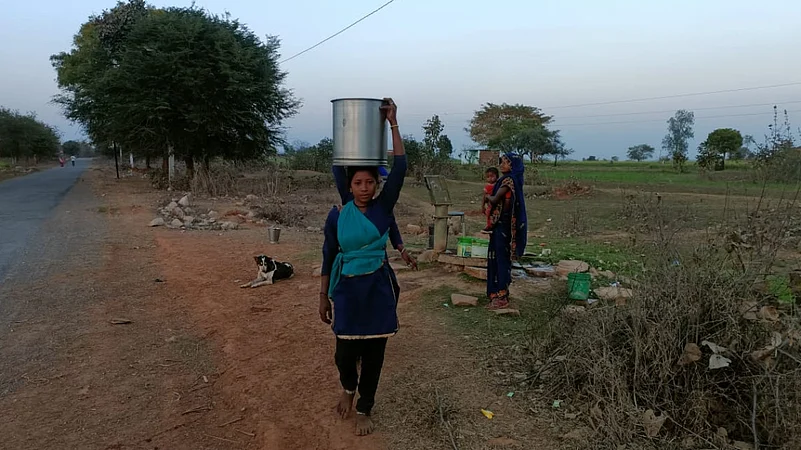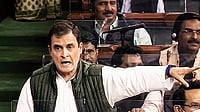It was the eponymous web series on Amazon Video Prime that highlighted Mirzapur in recent pop culture. The district, about 62 km from Varanasi and among the 80 Lok Sabha constituencies in Uttar Pradesh, is prominent for its trade and commerce, and temples and ghats. Politically, Mirzapur district is as vibrant as its history; from its first general elections in 1952 to its last one in 2019, the city has elected Members of Parliament from all political parties, such as John N Wilson of the Indian National Congress, Anupriya Patel of Apna Dal (Sonelal) and even the ‘Bandit Queen’ Phoolan Devi of Samajwadi Party.
The city is garnering attention again ahead of the final phase of the UP elections. The district is divided into five constituencies: Chhanbey, Mirzapur, Majhawan, Chunar and Marihan. Of its total population recorded at 28,78,360 in December 2020 based on Aadhar data 13,99,680 people (6,22,307 males and 5,55,010 females are voters. As per 2011 census, the district has a population of 24,96,970, out of which 24,96,970 out 13,12,302 are males 11,84,668 are females. The Hindus constitute a population of 22,92,534 (91.81 per cent while Muslims for 1,95,765 (7.84 per cent) SC share 26.5 per cent (6,61,129) of the population while STs form 0.81 per cent (20,132) of the total count. Out of the five assembly seats, Chhanbey is reserved for SCs.
However, deeply entrenched in caste politics, leaders here have turned a blind eye to everyday issues of the city and its adjoining villages that form the assembly segments, claim the locals. A major issue plaguing the region is water scarcity and the resultant array of waterborne diseases.
Dozens of patients queue outside Dr Sanjay Singh’s private nursing home in Deep Nagar, a village in Mirzapur district. With a BAMS (Bachelor of Ayurveda, Medicine and Surgery) degree, Singh is the only doctor within 15-km radius, and the existing public health centre (PHC) is defunct, claim locals.
Most patients suffer from renal stones because of the hard water in the region, informs Dr Singh. Talking about the problems of water-related ailment, the Ayurvedic doctor, in particular, explains that the high mineral content (between 120-180 PPM) in hard water causes kidney stones and the simultaneous scarcity of water only aggravates the problem. “Kidney stones are mainly calcium-based. They develop when calcium levels in the urine alter. Calcium particles or crystals collect on kidney walls during the elimination process because these are difficult to break down. The size of the stone grows more prominent over time due to this deposit, causing issues in the renal system. It is common knowledge that drinking plenty of water daily is critical to avoid dehydration as it can lead to kidney stones. However, genetic predisposition, food habits, climatic and socioeconomic conditions, gender, and other factors also play a role,” explains Dr Singh.
On visiting the clinic, Outlook spotted 30-year-old Sanju, accompanied by her sister-in-law. Sanju has had a kidney stone for the past seven months. She recently passed blood in her urine, and has acute pain on one side and back. “She has been in pain for a couple of days, but blood discharge while urinating is a sign of danger, and so we brought her to the doctor,” says the sister-in-law.

Like Sanju, most of the patients waiting in line at the clinic had similar problems due to the consumption of this contaminated water. “I have had acute pain in my back for two days and tried to subside it with over-the-counter painkillers, but in vain. The pain becomes so unbearable, at times it’s difficult to move around, and reaching the doctor’s clinic itself is such a challenge. I hope I get relief from his prescribed medicines,” says Bablu Devi, visibly in extreme discomfort.
On why patients here do not visit government PHCs, the typical response was that there were no doctors available at these centres on most days. Outlook could not verify this claim independently, however, a local BJP activist on the condition of anonymity, said, “Whenever we visit the health centre, we don’t get an appointment with the doctor of our choice. They are not very inviting and the treatment results are not good either, so villagers chose to come to Singh’s clinic. He is not an MBBS doctor, but has a degree in Ayurvedic medicine.”
However, not all ‘water-related’ health issues in the region are limited to renal stones; locals often get cholera, diarrhoea, typhoid, titis, gastroenteritis, which have caused several deaths.
Chintan Singh, a resident from Kakarad, suffers from frequent diarrhoea and intestines infected by Vibrio cholerae bacteria, responsible for cholera. Singh had returned to his hamlet from Mumbai when the first wave of COVID-19 emerged. “I had some savings from Mumbai where I worked as a labourer. I had thought of using it to marry off my daughter living in this village. Since my return, I have been out of work and spent most of my savings on doctors’ bills. I have a consistent problem of diarrhoea and had cholera twice; the water here is very scarce and bad in quality,” Singh tells Outlook.
Elaborating on the region’s water problems, Kakarad village chief Pawan Kumar from Marihan constituency says that water remains a significant concern despite the presence of lakes around. “Ideally, water should not be a problem as there are lakes in the adjoining areas of the villages here. But since all the water is diverted towards Prayagraj, we are left with nothing. Not even drinking water. As a substitute, we dug a 650 ft deep borewell in our village and connected it to a common hand pump. That hardly serves the problem as the water is still scarce and contaminated,” explains Pawan. He also points at the lackadaisical attitude towards sanitation. “We do not have proper sanitation facilities as promised by the Modi government under Swachh Bharat Abhiyan, and many villages here people have to share toilets,” Pawan points out.

However, to have a scientific perspective of the connection between renal stones and the kidney, Outlook contacted Dr Virendra Chowdhry posted at a PHC in Chargawan, Gorakhpur. Dr Chowdhry insists that there is no direct connection, but says hard water can always cause renal-related health issues and other waterborne diseases. Commenting on why many in this region suffer from renal stones, he says. “There is no direct contact between renal stones and hard water. Nevertheless, hard water can cause renal-related issues mostly among women, and water shortage leading to lesser water intake in these regions can cause renal stones.”
Interestingly, Pawan claims that water does not remain an electoral issue and that fundamental issues are overshadowed by caste and religion.


























